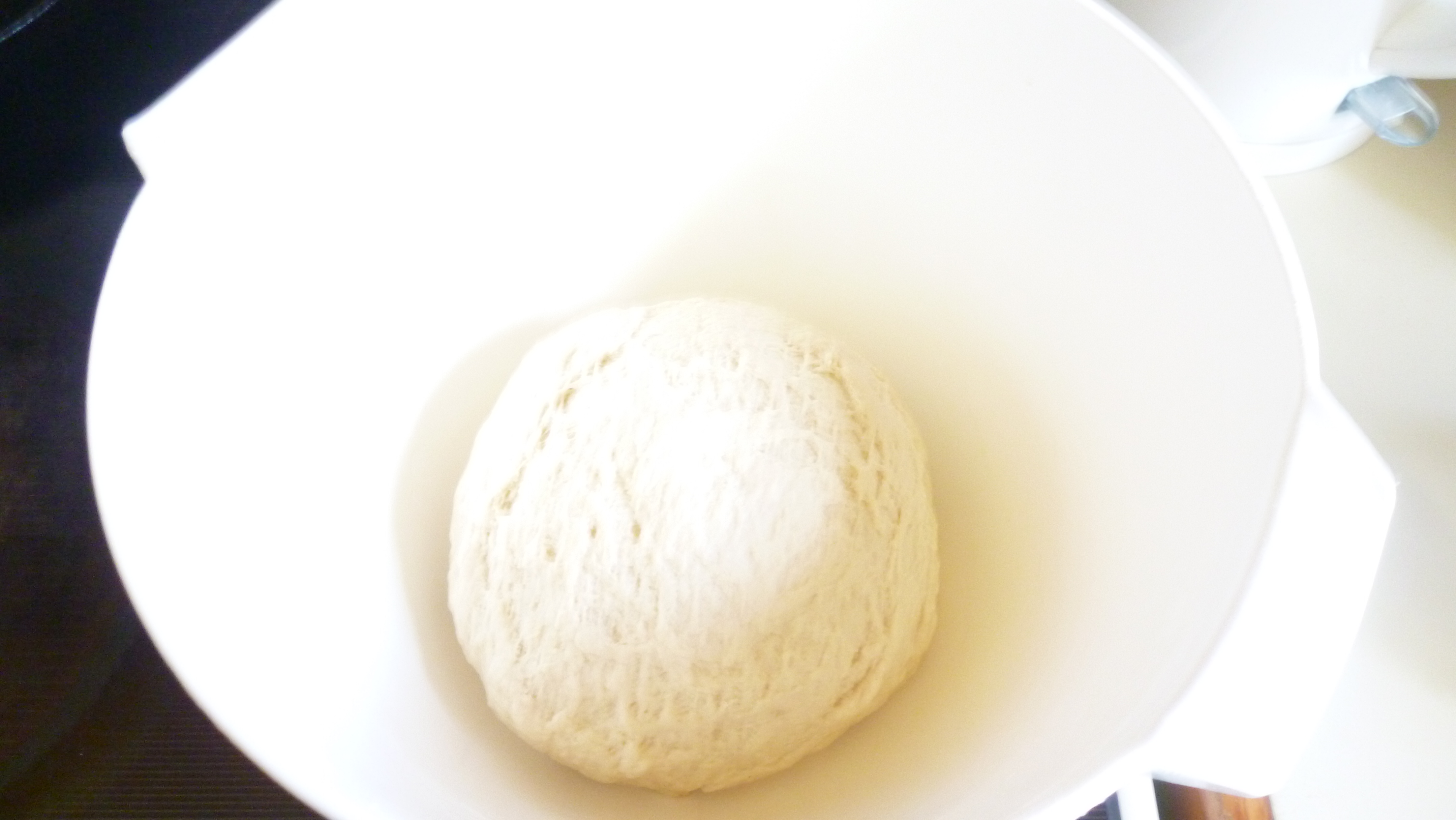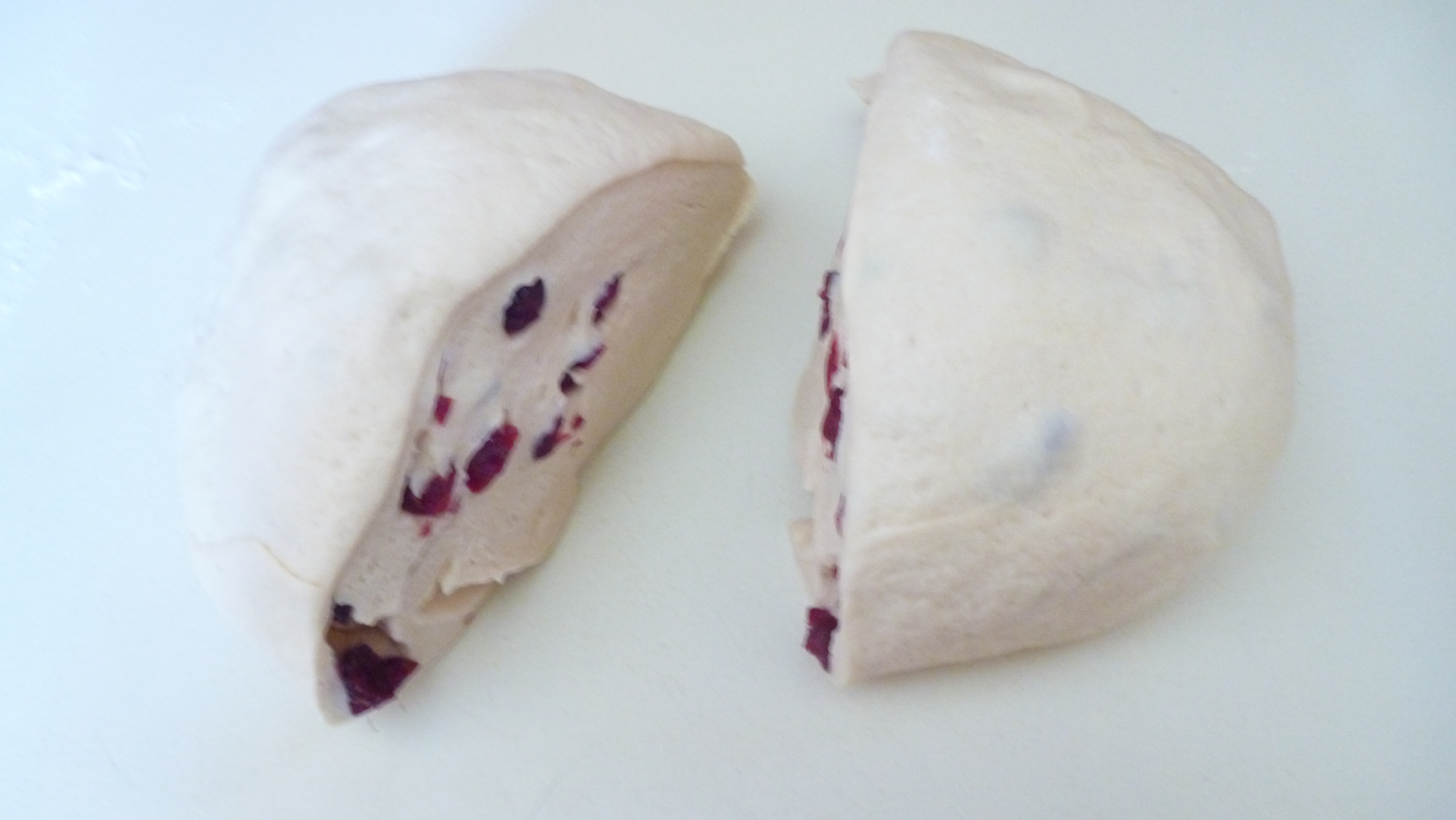This baby is simply divine..
Although cranberries are sweet, they are offset by the maple syrup and it is not too sweet.

- Yummy....
You need to start this the day before, but its still a easy recipe.
It tastes delicious, lovely toasted and even nicer with a lick of ricotta.
So lets get yeasty!!
I know you were thinking i had turned to the dark side of cakes and slices ....BUT NO!!
Ye of little faith!!

- Mmmmmm, lovely crumb
So what will you need?
For the starter:
1/4 cup of maple syrup
1/2 cup of warm water
1 tsp of dried yeast
1/2 cup of Strong bakers Flour

- Tasty with a pat of butter!!
For the dough:
2 cups of Strong bakers flour
1 cup of warm water
1/3 cup of olive oil
1 tbsp of maple syrup
2 tsp of dried yeast
1 cup of fine polenta
Pinch of Salt
1 cup of cranberries.

- Cranberry dough
Step one:
The night before or the day before (12 -24 hours before), warm water and mix in maple syrup and the dried yeast.
Allow to become creamy and frothy and then add in the flour.
Mix well and then cover with glad wrap and leave in RT for the next 12-24 hours.

- Cranberries...
Step 2:
When you are ready the next day, uncover the starter from the day before.
Warm the water and add in the yeast and the 2nd lot of maple syrup and allow to become frothy.
Mix this into the starter from the prior day along with the olive oil and combine well.
In a separate bowl, combine all the dry (flour, salt and polenta) ingredients and then mix in the wet mix.
Combine well, add a little more water if need be to make a smooth dough.
Knead for 5-8 minutes until the dough is elastic.
Cover with glad wrap and allow to rise for 2 hours.

- Roll the cranberries in the dough....
Remove dough and roll out slightly on a lightly floured board.
Sprinkle cranberries (as above) and then roll up so they don't fall out.
Give a small knead, integrating the cranberries.
Cut dough in half and form two baton shape loaves.
You could do round or plaited as well.
Place dough on baking tray with baking paper sprinkled with polenta.
Roll in polenta gently and cover with a tea towel.
Allow to rise for 70 minutes.

- two lovely loaves
Preheat oven to 200 celsius.
Slash the top of the loaves and place in the oven.
Bake for 30-35 minutes until slightly colored.
Remove from oven and allow to cool.
This crust is quite firm but the crumb is very moist.
When you are ready, slice a piece or break off a piece and ENJOY, ENJOY, ENJOY!!

- Ready to rise")

- ready to bake!!

- Slash them baby!!

- all baked....

- Have a piece...
Now you can with this recipe, take out the maple syrup and use black strap molasses for a different taste.
But only use half the amount of molasses.
It gives it a deeper color and the molasses off sets the cranberries as well.
http://greedybread.wordpress.com/2012/10/16/cranberry-maple-syrup-polenta-bread/